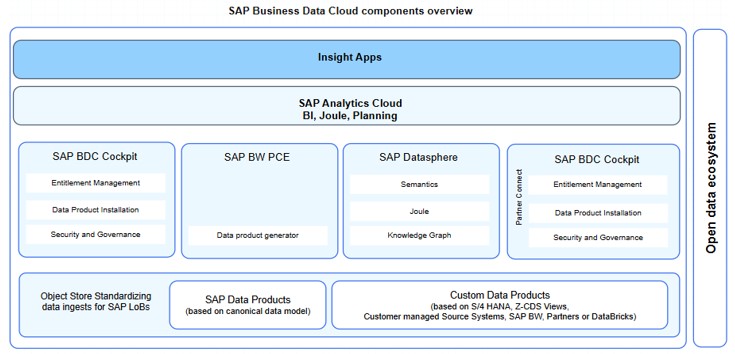SAP Business Data Cloud combines the power of SAP Datasphere, SAP Analytic Cloud, SAP BW ( Business Warehouse), and SAP Databricks. You get all components under a single license. It enables many use cases for customers to move to the cloud.

As we already know the power of SAP DataSphere and SAP Analytic Cloud, let’s dig into more details of SAP Databricks. With the introduction of SAP Databricks, SAP is trying to address the complexity of combining SAP with other enterprise or 3rd party data. Most hyperscalers provide Databricks and thus can be integrated easily with the SAP ecosystem.
Some of the benefits of using SAP Databricks are:
- Databricks is built on Apache Spark. Apache Spark is an open-source processing engine used for big data analytics and machine learning.
- Delta Sharing approach to data sharing across data, analytics and AI. Live Data can be shared with Databricks.
- Unified visibility into data and AI. You can easily discover and classify structured and unstructured data in any format, including ML Models, NoteBooks, dashboards, and files across all cloud platforms.
- Databricks combines data engineering, data science, and business analytics into a single platform.
- It is highly scalable and flexible to your data needs. It is cloud-based, so it can be scaled up or down based on organizational needs.
- Databricks provides comprehensive machine learning workflows through its “Databricks Workflows.” A feature allowing users to define, manage, and monitor multitask workflows for ETL, analytics, and machine learning,
Let’s move on to what SAP Databricks, SAP Datasphere, and SAC can bring when used together. Potential benefits are:
- SAP can bring more 3rd-party data near to SAP Data and it would be instrumental in the world of AI.
- The powerful AI/ML engine of Databricks can be utilized on SAP Data to train ML models.
- You can easily create Dashboards with data from Databricks and Datasphere. Databricks would be easily integrated with SAP Datasphere utilizing a zero-copy or delta-sharing approach.
- As both are on the same platform, it would streamline the data value chain.
- Context-Aware Insight Apps would utilize the power of Machine Learning available in SAP Databricks.
Data Fabric will remain at the heart of SAP BDC as it was with Datasphere. With the introduction of Databricks, SAP will bring more AI, data engineering, and other capabilities. This will push the client to do more analytics in SAP instead of moving data.